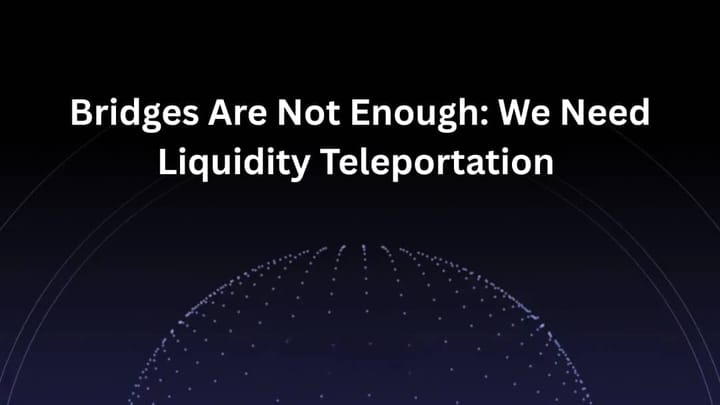What If You Could Move Millions for Pennies? Tether’s Stable L1 Is Trying to Make That Real

In a crypto world where volatility is often the norm, Tether’s new Stable L1 blockchain proposes a radical shift: a Layer-1 network purpose-built around USDT as its native token for both transactions and fees. Unlike Ethereum, Solana, or Tron—where users must manage separate volatile tokens just to pay gas—Stable L1 enables gas payments in the very stablecoin being transferred.
Why does this matter? Because predictable costs, operational simplicity, and reduced exposure to crypto market swings are exactly what institutional players crave. With backing from Bitfinex and guided by Tether CEO Paolo Ardoino, Stable L1 aims to transform how enterprises interact with blockchain infrastructure by removing the need for "crypto fluency." This article breaks down how the chain works, how it compares to other networks, and what this means for the future of blockchain-based finance.
1. Stable L1’s Architecture: Built for Institutions, Not Just Developers
Unlike general-purpose blockchains, Stable L1 is tailored for enterprise use. Its unique structure includes:
- USDT as Native Gas: Users pay transaction fees directly in USDT, eliminating the need for volatile tokens like ETH, SOL, or TRX. This ensures stable and predictable fees—a critical requirement for enterprise-level budgeting and accounting.
- Enterprise Lanes vs. Free Lanes: The network separates high-speed, fee-based "enterprise lanes" from gas-free lanes for everyday users. Institutions get dedicated throughput for high-volume transactions, while retail users can enjoy zero-fee peer-to-peer transfers—a potential game-changer in emerging markets where small fees matter.
- Gasless Wallets and “Invisible” UX: Users may not need to manage private keys, understand gas, or even realize they’re on a blockchain. Smart contracts will be USD-denominated, making applications easier to price, bill, and audit—perfect for businesses that want blockchain utility without crypto complexity.
2. Why Institutions Might Embrace Stable L1
Stable L1 is not just a technical experiment—it directly addresses pain points that have slowed institutional blockchain adoption:
- Operational Simplicity: With a one-currency model (USDT for everything), treasury departments don’t have to manage multiple assets. No ETH top-ups. No TRX balances. Just USDT.
- Risk Management: No need to hold volatile tokens on balance sheets. This protects against price swings and reduces regulatory complications from handling non-fiat crypto assets.
- Fee Transparency: Enterprises can plan ahead. A USDT transfer today costs the same as tomorrow—no need to track crypto prices to estimate costs. This also allows clear pricing strategies for services like remittances or B2B settlements.
- New Use Cases Enabled:
- Cross-Border Payments & Remittances: Zero-fee P2P transfers can undercut traditional providers in cost-sensitive regions.
- Institutional Settlement: Real-time gross settlement in digital dollars without central banking hours.
- Stablecoin-Only DeFi: Dollar-denominated smart contracts for lending, payments, and payroll—all without crypto volatility risk.
3. Trade-Offs: Centralization, Limitations, and Open Questions
As promising as Stable L1 sounds, it doesn’t come without caveats:
- Centralization: USDT is a centralized asset, meaning Tether Ltd. can freeze accounts. For some institutions, this compliance feature is a benefit; for others, it’s a red flag.
- Validator Uncertainty: Without a native token to incentivize decentralized validators, the chain could lean toward a permissioned model—potentially run by Bitfinex, Tether, and close partners.
- USDT Exclusivity: The network is laser-focused on USDT. While that’s great for simplicity, it may limit adoption from users who need multi-asset support or prefer alternatives like USDC or regulated digital currencies.
- Regulatory Scrutiny: Tether’s past scrutiny by regulators could affect adoption in certain jurisdictions. Stable L1’s compliance model is not fully detailed, and its long-term regulatory resilience is unproven.
- Unproven Scale: Despite big promises on throughput and free transfers, the network is still in testnet. It remains to be seen whether it can perform under global demand, especially without compromising on decentralization or opening the door to spam.
A New Chapter in Digital Dollar Infrastructure?
Stable L1 introduces a fresh paradigm: a blockchain where every transaction is in digital dollars—from payments to fees to smart contracts. For institutions, this could mean simpler operations, reduced risk, and a seamless user experience that finally bridges the gap between traditional finance and blockchain.
However, this comes at the cost of decentralization, ecosystem breadth, and potential regulatory risk. Still, if it delivers as promised, Stable L1 could become the first stablecoin-native infrastructure to power global payments, remittances, and finance at scale.
Practical Takeaways:
- Stable L1 simplifies crypto for institutions by removing the need for volatile fee tokens.
- The gas-free model could democratize stablecoin use in emerging markets.
- Adoption will depend on performance at scale, regulatory clarity, and institutional trust in Tether.
Looking Ahead:
Could this model redefine how blockchain integrates into mainstream finance? Will other stablecoin issuers follow suit? Stable L1 might just be the first of many purpose-built, fiat-denominated chains to come.



Comments ()